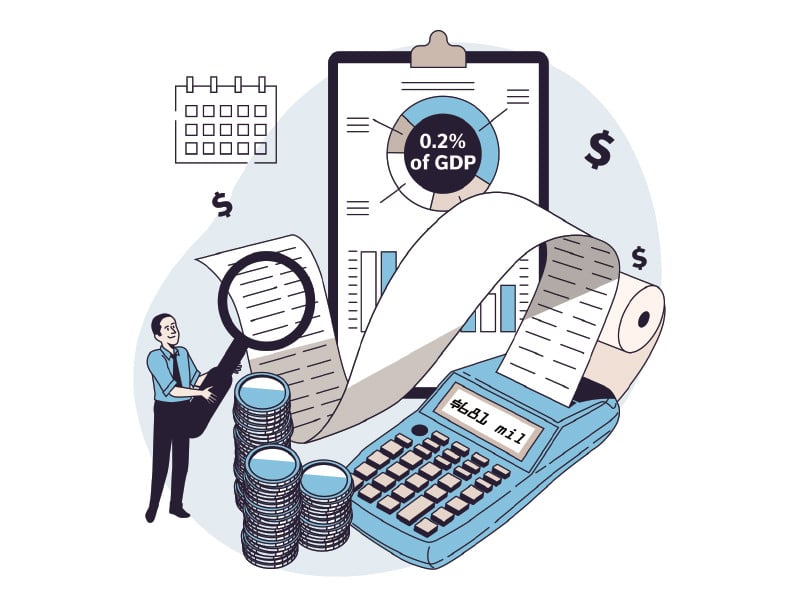By Salman Siddiqui
Published in The Express Tribune on July 20, 2024
KARACHI:
Pakistan posted a surprising 13-year low current account deficit (CAD) of $681 million (or 0.2% of GDP) for the fiscal year ending June 30, 2024. This was achieved through economic engineering, which partially compromised growth by controlling essential imports due to low foreign exchange reserves. The strategy successfully averted the high risk of default on foreign debt repayment during the year.
Despite the historical low deficit, there was heavy repatriation of profit and dividends worth around $2 billion in the last two months (May-June) by foreign companies operating in Pakistan. The central bank’s clearance of this overdue backlog was significantly offset by an 11.5% jump in goods exports to $31.09 billion and robust growth of nearly 11% in workers’ remittances to $30.25 billion in FY24.
Tahir Abbas, Head of Research at Arif Habib Limited, noted that Pakistan recorded its highest-ever net primary income balance outflow of $8.5 billion in FY24. This was driven by the heavy profit and dividend repatriation and interest payments. In contrast, the country reported a record high export of services in FY24, amounting to $7.8 billion, driven by all-time high technology exports totalling $3.2 billion, he said.
Goods imports increased by only 1% to $53.17 billion in FY24 compared to $52.69 billion in FY23. Government control over imports led to the partial or complete closure of many factories, rendering hundreds of thousands of people jobless. This was evident from historically low power and petroleum product sales amid significant tariff hikes in FY24. The country achieved moderate economic growth of 2.4% in the year, based on a massive turnaround in agricultural production.
In June 2024 alone, the current account deficit was $329 million due to the repatriation of profit and dividends by multinational companies. This deficit contrasts with the $490 million surplus recorded in June of the previous year (FY23). On a month-on-month basis, the deficit rose 33% in June compared to $248 million in May 2024.
Topline Research highlighted in a commentary that 85% of the FY24 deficit ($577 million out of $681 million) was recorded in the last two months (May and June) due to a significantly higher primary income deficit. The average primary income deficit was $1.3 billion per month in the last two months, compared to an average of $593 million in the first ten months of FY24. “We believe the higher primary deficit in the last two months is attributed to the clearance of dividend/profit repatriation by the central bank, as indicated in the last analyst briefing of the central bank,” the report stated.
The full-year primary income deficit in FY24 was $8.6 billion, the highest in Pakistan’s history. Based on data available on the SBP website for the first 11 months of FY24, profit/dividend repatriation was $1.8 billion, compared to $313 million in the same period last year. “The annual average for FY18-22 was $1.8 billion.”
The goods trade balance improved by 11% to $22 billion in FY24, mainly due to increased exports and muted imports. However, the services trade deficit increased by 122% to $2.3 billion, with services imports rising 17% to $10 billion, while exports increased by a meagre 3% to $7.8 billion.
Looking ahead, Topline Research projected, “We expect CAD to clock in at $5 billion or 1.2% of GDP in FY25, with remittances of $32 billion.”
FDI rises
The flow of foreign direct investment (FDI) in various sectors of Pakistan’s economy, such as power and financial sectors, increased by 17% in FY24, rising to $1.90 billion compared to $1.63 billion in FY23. China, Hong Kong, the United Kingdom, the United States, Singapore, Canada, the UAE, and Saudi Arabia emerged as the top eight foreign investors, each investing between $74-568 million in the year.
These investments were primarily in sectors including power, oil and gas exploration, financial business, mining and quarrying, petroleum refineries, and trade. These sectors attracted FDIs ranging from $68-800 million each during the year.



